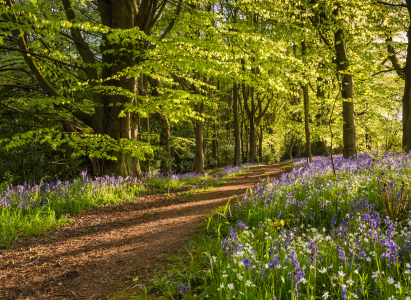
Identifying British Wildflowers
There are thousands of wildflower species across the whole of Britain and Ireland, and it can get pretty difficult to tell them all apart – so we’ve tried to make it a little easier for you. While we can’t list them all, we’ve picked out a few of our favourites. Discover the wonderful world of wildflowers with our guide – the perfect information hub for your children.
And remember, if you’re taking the little ones out to investigate local wildlife, you need to be properly dressed. The outdoors can get pretty messy, (and so can your kids!), so be prepared and pick up everything you need to keep them protected from the elements – and the mud. Browse our range of kid’s puddle suits to cover them from head to toe and kids’ walking shoes to get them ready for the great outdoors.
Discovering British Wildflowers: Our Easy Guide
We’ve detailed some facts and features of various types of wildflowers that you’re likely to find dotted around the UK – including when they flower, where you can find them and what they look like.
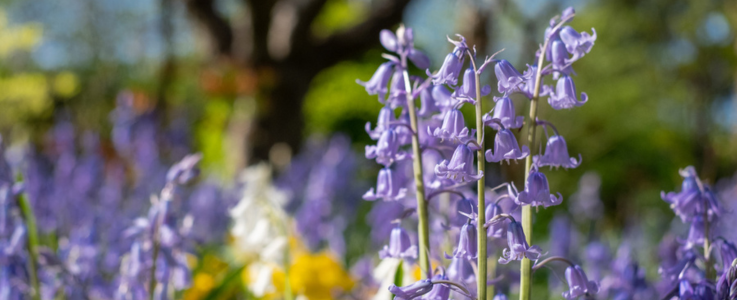
Bluebell – Hyacinthoides
The clue is in the name. Bluebells are distinctive flowers that can be found primarily in April and May throughout woodlands as well as in towns and gardens. The narrow bell-shaped flower is an iconic violet blue colour with narrow, pointed leaves – though bluebells are said to be poisonous if ingested so try to keep your distance.
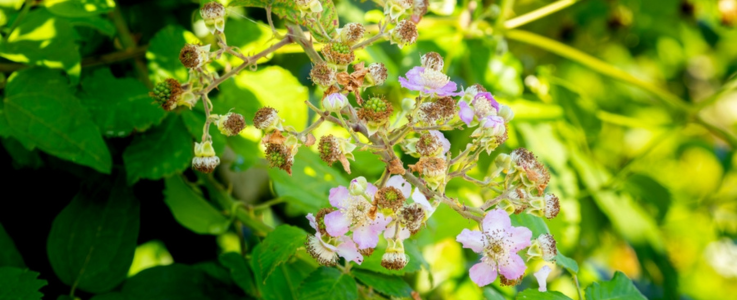
Bramble – Rubus fruticosus
The source of the blackberry! A bramble bush has long stems that are covered in thorns and can grow up to 2 metres high. The leaves are dark green on top and paler underneath and in the summer, they’ll flower with small pink or white petals. But you’ll be able to spot a bramble bush pretty much all year round, and across most habitats, too!
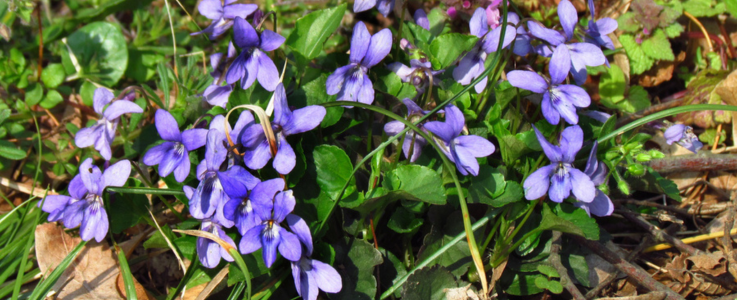
Common dog violet – Viola riviniana
A popular wildflower amongst butterflies, the flower of a common dog violet has 5, bright purple petals and a white middle. As for the leaves, they’re heart shaped with darker green colouring. They’re often confused with the sweet wild flower, which is similar in colour but it has a sweet scent – unlike the dog violet which has no scent at all. You’ll see them flowering between April and June in most areas, including farmlands, heathlands and woodlands.
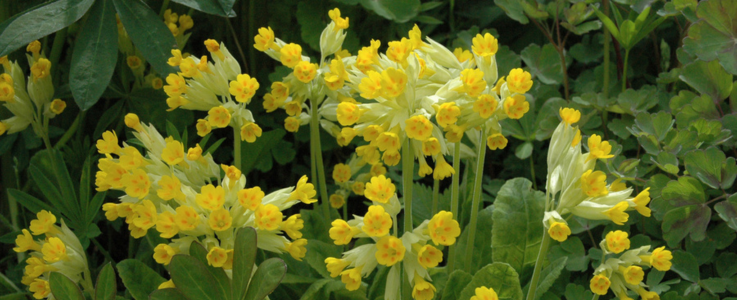
Cowslip – Primula veris
Cowslip can be found during the spring in woods and meadows, as they flower from April to May. As for the flowers themselves, they’re bright yellow and bell-shaped with 5 petals that are indented at the tips and can grow to between 15 and 30cm. The leaves of a cowslip can be eaten raw in salads or even cooked as a vegetable. Or why not try them brewed into a cup of tea?

Deadly nightshade – Atropa belladonna
Deadly nightshade has long, thin branches with smooth-edged, oval-shaped leaves that end with a point – but be careful, because the leaves are poisonous! So avoid getting too close. As for the flowers, they’re shaped like a bell with purple and green colouring, and the fruit is small, shiny black berries – you can tell them apart because a star shape forms where the berry grows from the plant.
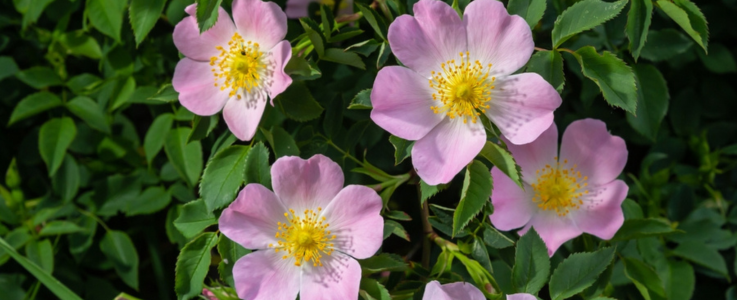
Dog rose – Rosa canina
Dog rose can be found on hedgerows, woodland edges and it flowers from May to August, while the fruit ripens between September and October. The stems are covered in hook-shaped prickles while the leaves alternate from side to side. The flowers are large, with pink or white petals (5 of them) and stamen coming out of the middle. They smell quite sweet so you’ll be able to sniff them out from a crowd!
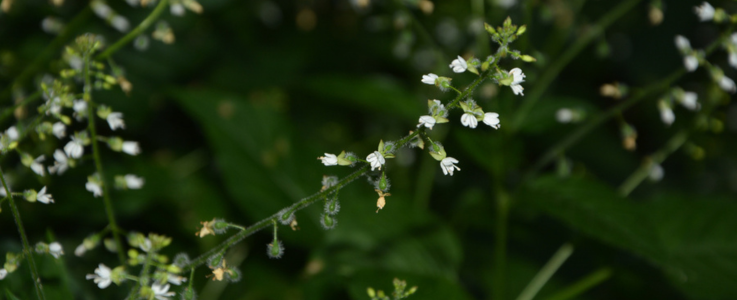
Enchanter’s nightshade – Circaea lutetiana
Enchanter’s nightshade flowers from June to September in woodlands, grasslands and even gardens. Although if you found it in the latter, you may consider this wildflower a weed. Its leaves are oval and its flowers are small, pinkish-white with two scalloped petals – they’re quite unique so it’s relatively easy to identify them.
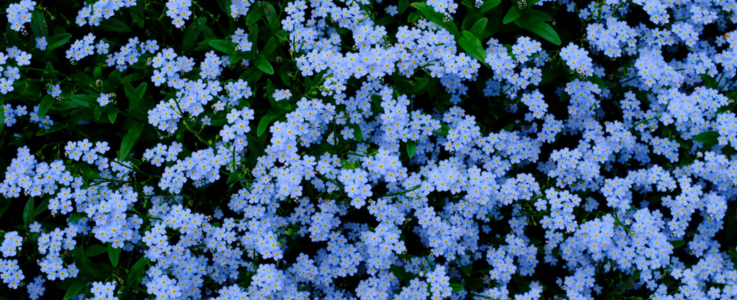
Forget-me-not – Myosotis
Look out for clusters of small blue flowers with 5 petals and white or yellow centres and simple leaves. You’ll find them mainly in spring and early summer and they tend to like shaded, woodland areas. Forget-me-nots are favoured by bees and butterflies so be sure to look out for these, too.

Foxglove – Digitalis
Foxglove is a valuable source of nectar for bees that flower from June to September. The foxglove flower is a downturned bell shape in a pink/purple colour with dark coloured spots on the inside. They grow well in acidic soil but can be found across the whole of the UK – especially on the edges of woodlands, on roadside verges, heathland, and in gardens and hedgerows. Foxglove is poisonous and highly toxic to consume, so always keep your distance from them.
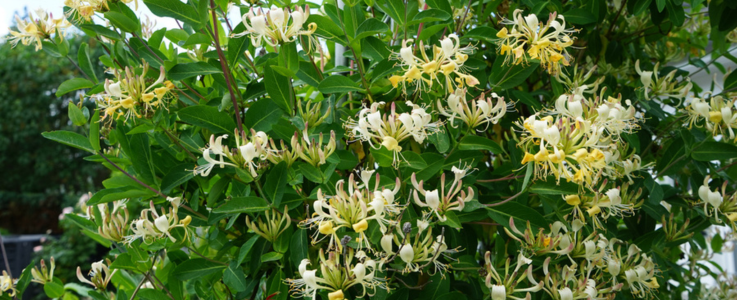
Honeysuckle – Caprifoliaceae
Honeysuckle grows in any regular garden soil, as well as coastal, moorland and built up areas, while flowering between June and September. Red berries ripen in autumn while the cream tube-shaped flowers open up at the ends and turn a yellow-orange colour – and they have a scent to match. It’s a heady, sweet blend of fruits, floral, nectar and honey.
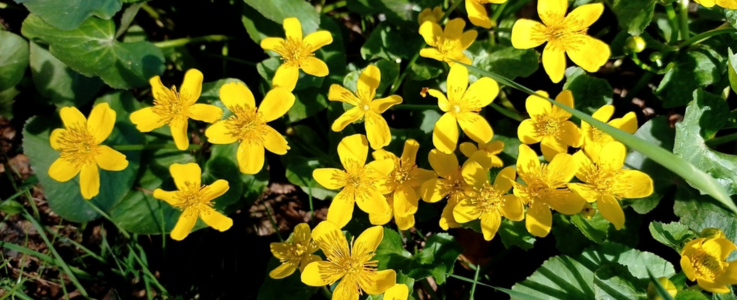
Kingcup – Caltha palustris
You’ll find Kingcups around water, like streams and in the shallow edges of ponds, during late spring and early summer. The flowers are large, shiny and yellow – think buttercups…but much bigger! You’ll typically see them from March to July.
Top tip: If you’re looking to create your own garden pond, Kingcups make for a great addition! The flowers offer shelter for wildlife (like friendly frogs!) and provide extra food for insects.
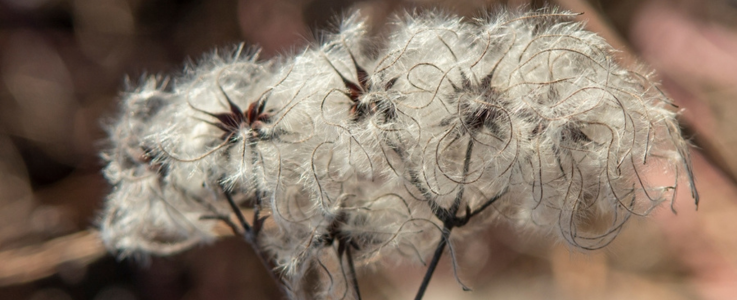
Old man’s beard – Clematis vitalba
It looks just as it sounds! Old man’s beard is a climber, mostly seen growing in hedgerows during the autumn and winter months. Covered in fluffy white seedheads that sprout out from a darker centre, the quirky white fluff gives off the appearance of Santa’s beard.
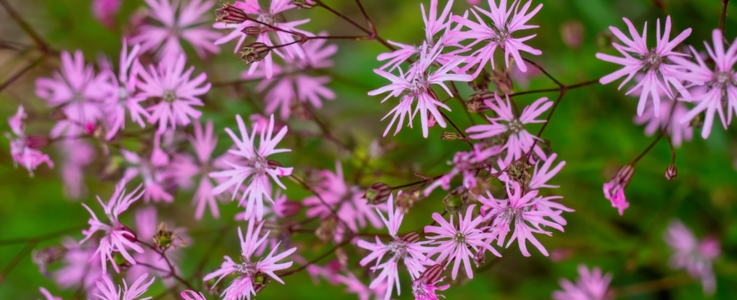
Ragged Robin – Lychnis flos-cuculi
Most commonly found in naturally damp locations, these pink and white flat flower heads are star-shaped with stamen coming out from the centre. The petals are ragged, narrow points, sparsely sprouting from the centre of the flower. You’re likely to find ragged robins between May and August in a number of different habitats, including wetlands, built-up areas and freshwater areas.

Scarlet pimpernel – Anagallis arvensis
The colour is in the name – Scarlet pimpernel is a 5 petalled flower, bright red or pink in colour, that stems from long stalks with oval leaves. If you’re out looking for the scarlet pimpernel, you’ll have best luck between May and October around farmlands and built-up areas.
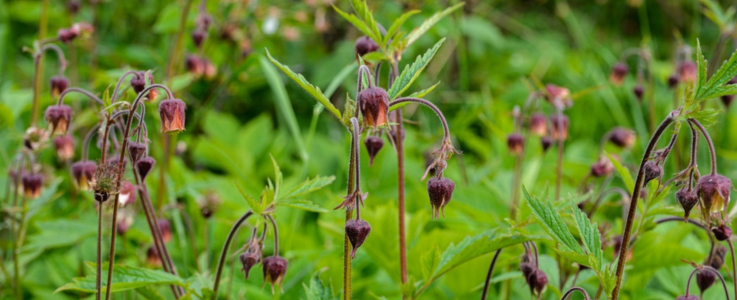
Water avens – Geum rivale
Found in damp and cool spots, water avens are bell-shaped flowers that are dark red/orangey-pink on colour, with yellow stamen. As their name gives away, they favour streams, lakes and ponds or shaded areas, and typically flower between May and September.
And that’s it! Our handy guide to wildflowers. Now you should be feeling much more prepared to go hunting for wildflowers – and maybe even build your very own wildflower garden! But remember to prepare for the weather before you do. Whether it’s hot or cold, rainy or snowy, shop our range of kids’ outdoor clothing and kit out your little ones with everything they need to stay comfortable and protected while investigating the wilderness.
